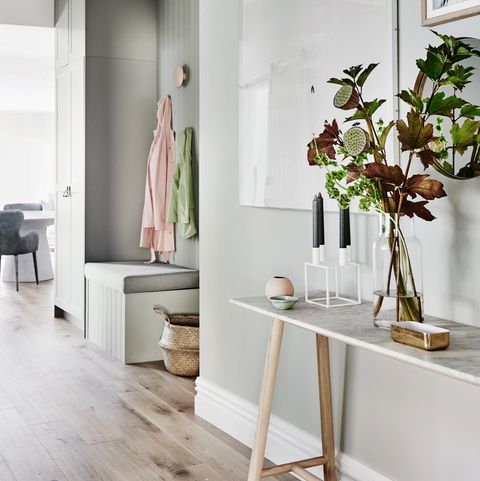Landlord property inspection list
Once you have agreed a time and date with the tenant, the inspection can go ahead.
As a landlord, it’s your duty to make sure your property is legally compliant and a safe place for your tenants to live. Yourself or the agent will be looking to see if anything needs to be repaired or replaced during the inspection, and whether there is anything that may represent a danger to the tenant. It’s also an opportunity to check that the tenant is not in breach of the tenancy agreement. Inspections are also a perfect opportunity to check in with your tenants, make sure tenants are happy and to discuss and resolve any potential issues they may have.
Why are regular property inspections important
You should check
- Statutory inspection checks
- Property condition
- Tenancy breaches
Statutory inspection checks
There are three key health and safety areas where landlords must carry out statutory annual checks to fulfil their legal obligation and meet their duty of care to the tenant.
The importance of property inventories
Gas safety
- Give the tenant a copy of the gas safety certificate before they move in
- Have every gas appliance, boiler and flue checked by a Gas Safe registered engineer on an annual basis
- Give a copy of the gas safety certificate to your tenant within 28 days of the annual check being carried out
Fire safety
- Install and test a smoke alarm on each floor of the property as a minimum. Replace batteries when needed
- Supply and test a carbon monoxide alarm in each room that has a solid fuel burner, stove or gas boiler. Replace batteries if needed
- If the property is an HMO install fire alarms, fire extinguishers (tested) and fire blankets
- Make sure that escape routes are freely accessible and that the tenant knows where they are
- If there are fire doors make sure they have clear access and can be opened
- Check that all supplied furniture and furnishings are ‘fire safe’ products
Can landlords have tax efficiency and flexibility?
Electrical safety
- Have a registered electrician carry out a professional check every five years to get an Electrical Installation Condition Report (EICR) or sooner if the most recent report recommends it
- Make the EICR available to every tenant before they move in and each time the tenancy changes hands
- Protect against potential electric shocks by checking the property has an adequate residual current device (RCD) installed
While it is not law, it is good practice for:
- all movable electrical items supplied to have an annual portable appliance test (PAT). Any items that aren’t in good condition or not fit for purpose should be replaced
- a registered electrician to carry out a visual inspection of the electrical system between tenancies, including checking all sockets and light fittings
Tenancy breaches
Most tenants respect where they are living and will take good care of your property, but you may have a tenant who is less considerate for any number of reasons. They may well try to hide what’s going on, so look carefully during every inspection and take action to deal with anything you find, making sure you keep a written record of all communication.
Illegal activity
Pre-arranging periodic inspections with the tenant at the start of the tenancy is a great way to reduce the potential risks of any illegal activity (although background checks before the tenancy starts will obviously help too!).
Sometimes the signs can be obvious. Examples include drug use (which can be easy to spot through smell and the paraphernalia used) and, assuming you are allowed access into the property, cannabis farms are even more noticeable, as they usually involve significant damage and closed off rooms.
How to calculate your rental yield
Tenants who sub-let
Your tenant might look to sub-let your property without your knowledge or permission. This may be because they are splitting the cost of the rent or making a profit from their sub-tenant. Sub-letting can lead to overcrowding which has legal implications, for example, if it becomes an HMO. Be alert to any signs that the property might be being sub-let:
- Are there too many beds for the number of tenants? If you rent to a single person does it look like a family are living there?
- Are tenants claiming the people staying there are just guests?
- Are there any signs that additional areas, such as sheds and outhouses, are being used
How to assess wear and tear at your rental property
Smoking
Most tenancy agreements ban smoking as it can result in costly repairs which are time consuming. Smoking is not illegal and clauses in tenancy agreements won’t put all tenants off. If you are a non-smoker the smell of cigarettes is easy to detect, as it lingers and any attempts to disguise it or cover it with other strong smells is difficult. Even harder to hide are the nicotine stains on decoration and furnishings – or worse, burns. If you see signs of smoking, tell the tenant and remind them that they are ultimately responsible for returning the property in the same condition and standard of cleanliness as at the start of the tenancy. If they don’t, they will have to pay costs to make good.
How to manage your rental property effectively
Pets
The government have updated their model tenancy agreement making it easier for landlords and tenants to include well-behaved pets in their tenancy. However, many landlords still object to having a pet and this is at their discretion, provided permission is not unreasonably withheld. Even if baskets, food bowls and leads etc are removed pet hair, scratched doors and furnishings, carpet damage, dug up grass and even the smell can be indicators that pets are living in the property. If there is evidence of a pet at the property you should discuss this with your tenant. In a block of flats, you will need to check if the head lease also bans pets in the property. Where this is the case, you will have to make it very clear to the tenant as it may be grounds for eviction.
Mid-term inspections are a great way of making sure the property is being looked after and recording anything out of the ordinary which can, if necessary, be followed up. A contractor working in the property may see things that are not detailed in the mid-term inspection and may be able to confirm any suspicions, such as a pet in the property without permission.
Please contact Pelin Martin to book a 30-minute complimentary property consultation on +0208 994 7327 – pm@bluecrystallondon.co.uk


